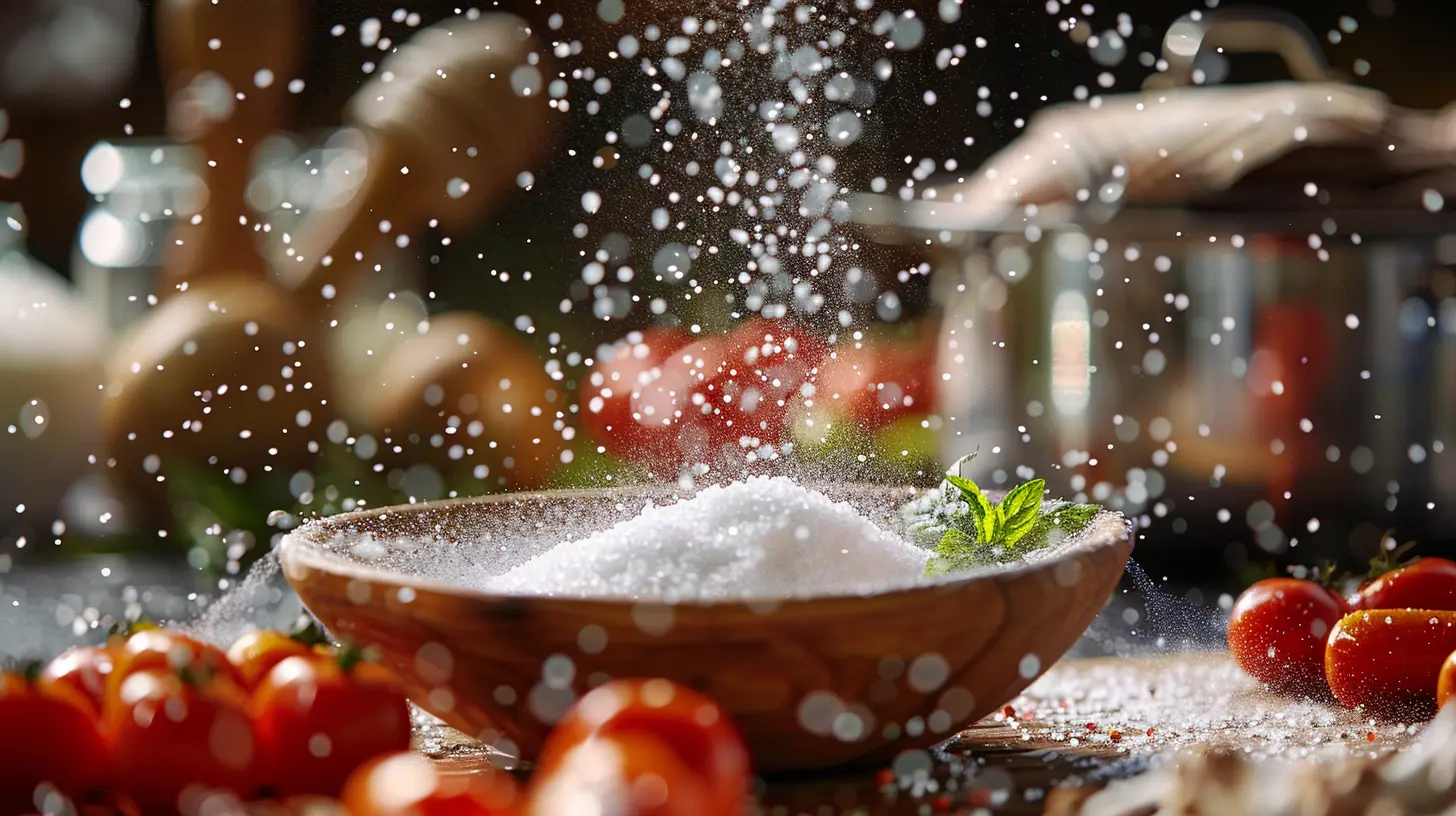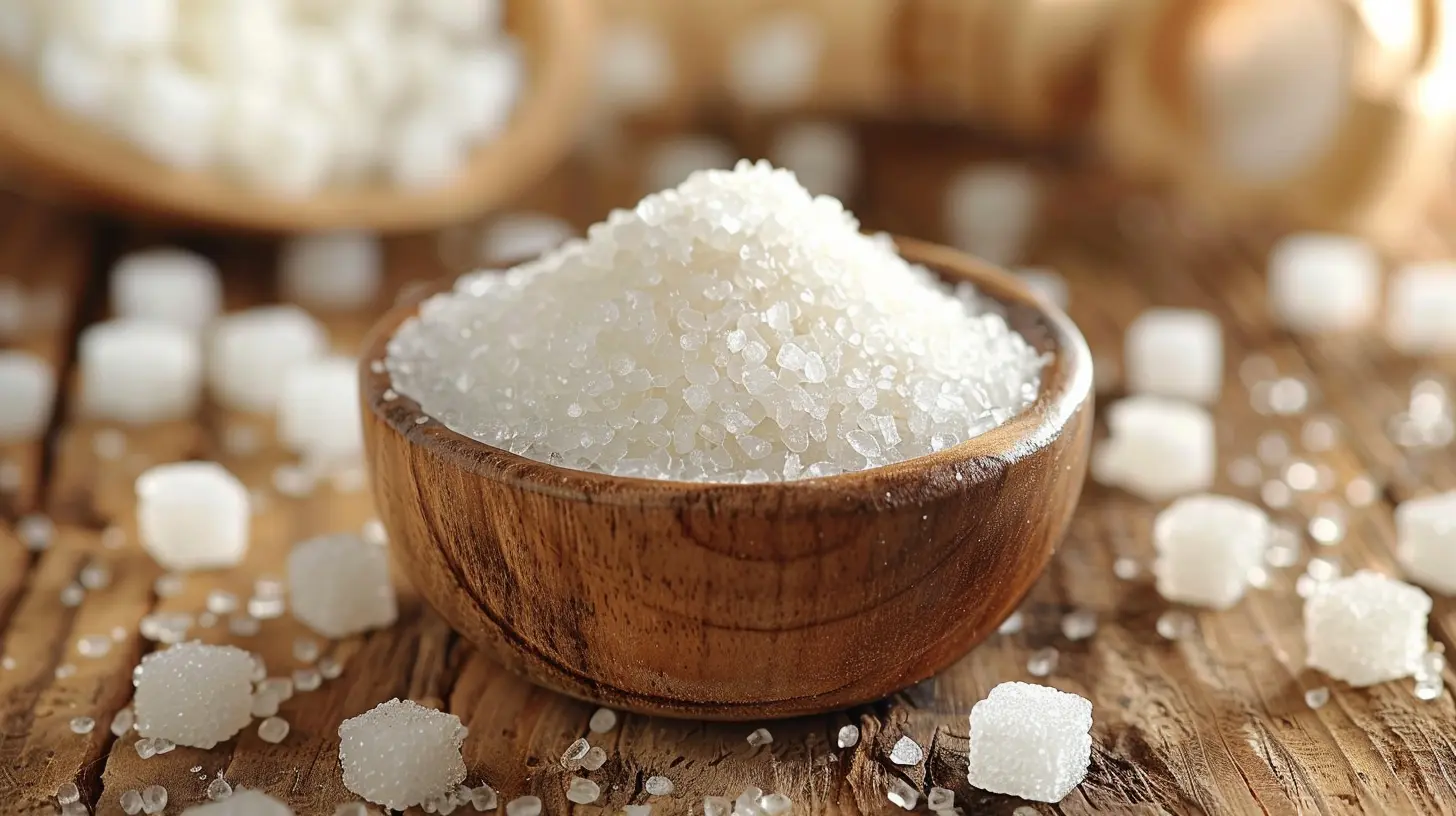How to Reduce Sugar in Your Cooking Without Losing Flavor
13 December 2024
Let’s face it: sugar is everywhere. It’s not just in cookies, cakes, and candies — it sneaks into salad dressings, pasta sauces, granola bars, and even your favorite “healthy” yogurt. While we all love a little sweetness in life, consuming too much sugar can wreak havoc on your health. So, what’s the solution? Do we resign ourselves to bland food for the rest of eternity? Absolutely not! I’m here to tell you that you can cut back on sugar without sacrificing flavor. Yes, you can have the (low-sugar) cake and eat it too.
In this guide, we’re diving into practical, creative, and downright delicious ways to reduce sugar in your cooking while keeping the tastiness intact. Ready to make your meals both healthy and drool-worthy? Let’s go!
Why Should You Reduce Sugar in Cooking?
Before we dive into the how, let’s take a moment to understand the why. Sure, sugar tastes great, but consuming too much of it comes with a hefty price tag. Excessive sugar intake has been linked to a laundry list of health concerns, including:- Weight gain: Sugar-loaded foods are typically calorie-dense and low in nutrients, making it easier to pack on the pounds.
- Increased risk of chronic diseases: Conditions like diabetes, heart disease, and even certain cancers have all been associated with high sugar consumption.
- Energy rollercoasters: Ever noticed that slump an hour after indulging in a sugary treat? Those energy crashes are no fun.
- Skin issues: Sugar can contribute to inflammation and accelerate signs of aging (hello, wrinkles).
Cutting back on sugar doesn’t just make sense for your health—it’s a win for your taste buds, too. By reprogramming your palate, you’ll start appreciating the natural sweetness in foods that often go unnoticed when sugar steals the show.
Tips to Reduce Sugar Without Losing Flavor
1. Start Small: Gradually Cut Back on Sugar
Cutting sugar overnight might feel like a shock to your system (and your taste buds). Instead, take baby steps. If a recipe calls for 1 cup of sugar, try using ¾ cup the first time, then reduce it to ½ cup the next time you make it. Your palate will slowly adjust, and you’ll likely find you don’t even miss the extra sugar.2. Use Natural Sweeteners
When you still want that sweet kick, consider swapping refined sugar for natural sweeteners, like:- Honey: A drizzle of honey adds sweetness and complexity to sauces, marinades, and baked goods.
- Maple syrup: This isn’t just for pancakes! Its robust flavor works well in oatmeal, muffins, and salad dressings.
- Dates or date syrup: These naturally sweet fruits are perfect for blending into smoothies, energy balls, or even desserts.
- Coconut sugar: With a slightly caramel-like taste, it’s a great substitute in recipes like cookies and cakes.
Keep in mind, natural sweeteners still contain sugar and calories, so use them in moderation.
3. Embrace Spices for Flavor
Spices are like the unsung heroes of the flavor world. They can add depth, warmth, and even a hint of sweetness to your dishes without a speck of sugar. Here are some to try:- Cinnamon: Perfect for sweetening oatmeal, yogurt, or baked goods.
- Nutmeg: Adds a warm, nutty sweetness (try it in your coffee or pancake batter!).
- Vanilla extract: A dash of vanilla can trick your taste buds into thinking something is sweeter than it is.
- Cardamom: Subtly sweet and aromatic, it’s amazing in chai tea or curries.
Think of spices as your flavor amplifier. They won't mask the absence of sugar — they'll make your food so flavorful you won’t even miss it.
4. Highlight Natural Sweetness in Ingredients
Some foods are naturally sweet, and you can use them as the star of your recipes. Here are a few ideas:- Fruits: Bananas, apples, pears, and berries can add sweetness to everything from smoothies to pancakes.
- Caramelized vegetables: Roasting veggies like carrots, sweet potatoes, or onions brings out their natural sugars.
- Tomatoes: Believe it or not, slow-roasting tomatoes can transform them into nature’s candy.
Pro tip: If you’re baking, mash a ripe banana or unsweetened applesauce to replace some (or all) of the sugar in your recipe. It’s like a sweet little magic trick.
5. Use Acid to Balance Flavors
Here’s a pro cooking tip: When you remove sugar, adding acid can create the balance your dish needs. Think of acid as the zing that makes your taste buds dance. Options include:- A splash of fresh lemon or lime juice
- A drizzle of balsamic vinegar
- A spoonful of tangy Greek yogurt
Acidity perks up flavors and makes them pop, so you won’t even notice the reduced sweetness.
6. Play with Texture
Sometimes, what you crave isn’t just sweetness—it’s sensory satisfaction. Instead of focusing on sugar, create excitement through texture. Add crunch with toasted nuts, seeds, or coconut flakes. Smooth things out with creamy avocado or rich Greek yogurt. When your dish is a textural playground, you’ll find it much easier to enjoy it without loads of sugar.7. Stay Mindful of Store-Bought Condiments and Mixes
Sugar loves to hide in plain sight, especially in products like ketchup, marinara sauce, and salad dressings. Instead of buying premade versions, try making your own with fresh ingredients. Not only will you have more control over the sugar content, but your homemade versions will taste fresher and more vibrant. Trust me, homemade salad dressing will change your life.8. Sweeten Drinks Naturally
If you’re a fan of sugary beverages like soda, coffee drinks, or sweetened teas, consider these swaps:- Infuse water with fruit: Add slices of orange, lemon, or cucumber to your water for a refreshing twist.
- Flavor your coffee naturally: Replace syrups with a dash of cinnamon or a splash of vanilla extract.
- Go herbal: Brew a cup of fruity herbal tea when you’re craving something sweet.
Simple Low-Sugar Recipe Swaps
Let’s put some of these tips into action with a few easy swaps:- Instead of sugary marinades: Use balsamic vinegar, fresh herbs, and olive oil.
- Instead of sugary desserts: Try fresh fruit with a dollop of whipped coconut cream.
- Instead of soda: Enjoy sparkling water with a splash of cranberry or pomegranate juice.
Sugar-Free Doesn’t Mean Flavor-Free
Here’s the bottom line: cutting back on sugar doesn’t mean sacrificing joy. On the contrary, it can open your eyes (and taste buds) to an entirely new world of flavors. By making small, intentional changes, you can satisfy your sweet tooth while nourishing your body.So, are you ready to take on the challenge? I promise, your food will still taste amazing—if not better. Start small, experiment in the kitchen, and have some fun along the way. Who knows, you might even inspire your friends and family to join the low-sugar movement. After all, sharing is caring.
all images in this post were generated using AI tools
Category:
Healthy CookingAuthor:

Madeline Howard
Discussion
rate this article
11 comments
Paris Dodson
Great tips! Reducing sugar can be tough, but substituting with spices and natural sweeteners really helps maintain flavor. I especially loved the idea of using vanilla and cinnamon—definitely trying these in my next recipe!
April 6, 2025 at 4:21 AM

Madeline Howard
Thank you! I'm glad you found the tips helpful. Enjoy experimenting with those flavors!
Kayla Patterson
Great tips! Emphasizing natural sweeteners and spices really helps maintain flavor while cutting down on sugar.
March 30, 2025 at 3:20 PM

Madeline Howard
Thank you! I'm glad you found the tips helpful. Natural sweeteners and spices can truly elevate flavor while lowering sugar content!
Finley McCray
Elevate your culinary creations by embracing natural sweetness from fruits and spices! Reducing sugar doesn’t mean sacrificing flavor; it’s an opportunity to explore vibrant tastes and healthier alternatives. Let’s take the leap towards a more delicious, nourishing kitchen together! Your tastebuds will thank you!
February 2, 2025 at 4:42 AM

Madeline Howard
Absolutely! Embracing natural sweetness from fruits and spices not only enhances flavor but also promotes healthier cooking. Let's explore these vibrant alternatives together!
Eva Reilly
What a fantastic guide! Reducing sugar while maintaining flavor can be a challenge, but your tips are both practical and inspiring. I love how you emphasized natural alternatives and creative spices. This will certainly help many of us enjoy healthier cooking without sacrificing taste. Thank you for sharing your expertise!
January 24, 2025 at 5:50 PM

Madeline Howard
Thank you so much for your kind words! I'm glad you found the tips helpful and inspiring. Happy cooking!
Upton McCollum
Great tips! Reducing sugar can feel daunting, but your suggestions make it so approachable. I love using spices like cinnamon and vanilla to enhance flavors naturally. Can't wait to try out some of these ideas in my next recipe. Thanks for sharing!
January 15, 2025 at 5:22 PM

Madeline Howard
Thank you so much for your kind words! I'm glad you found the tips helpful and that you enjoy using spices to enhance flavors. Happy cooking!
Roxanne McSweeney
Explore natural sweeteners, spices, and citrus to enhance flavor while lowering sugar for healthier meals.
January 10, 2025 at 5:26 AM

Madeline Howard
Great suggestion! Natural sweeteners, spices, and citrus are fantastic ways to enhance flavor and reduce sugar in cooking. Thank you for sharing!
Kismet McLean
Reducing sugar invites creativity; exploring natural flavors can transform your cooking, enhancing health without sacrificing the joy of taste.
January 6, 2025 at 5:59 PM

Madeline Howard
Thank you! Embracing natural flavors not only enhances health but also opens up exciting culinary possibilities.
Georgina Montgomery
What a fascinating topic! I'm intrigued by the idea of balancing flavor and health. What are some unexpected ingredients or techniques you've discovered that can truly replace sugar effectively?
December 30, 2024 at 5:38 AM

Madeline Howard
Thank you! Some unexpected alternatives include using pureed fruits like dates or applesauce for sweetness, and incorporating spices such as cinnamon or vanilla to enhance flavor without sugar.
Alexander McGarvey
Reducing sugar in your cooking doesn't mean sacrificing taste! Try using natural sweeteners like honey or maple syrup, add spices like cinnamon or vanilla, and focus on enhancing flavors with fresh fruits and herbs. Experimenting will lead to delicious, healthier meals!
December 16, 2024 at 4:25 PM

Madeline Howard
Absolutely! Embracing natural sweeteners and flavorful ingredients can create delicious meals while keeping sugar levels in check. Happy experimenting!
Monique Wilcox
Great tips on cutting sugar without sacrificing taste! Remember, a little creativity goes a long way in the kitchen. Embrace the challenge, and soon you'll be whipping up delicious, healthier dishes that everyone will love! 🍽️✨
December 16, 2024 at 5:39 AM

Madeline Howard
Thank you for your encouraging words! Embracing creativity really does make a difference in delicious, healthier cooking. Happy cooking! 🍽️✨
Oberon Roberts
Great article! I appreciate the practical tips for reducing sugar while maintaining flavor. I’m excited to try out some of these strategies in my cooking. It's a wonderful way to promote healthier eating habits. Thank you!
December 14, 2024 at 4:00 PM

Madeline Howard
Thank you so much! I'm glad you found the tips helpful. Happy cooking!
MORE POSTS

Deepening Relationships Through Mindful Communication

Mindful Eating: Tuning Into Your Body’s Natural Signals

Foods That Maximize Endurance for Long-Distance Running

The Psychological Impact of Going Gluten-Free: What to Expect

How Consistent Cardio Can Support a Healthy Lifestyle

Overcoming Anxiety Through Mindfulness Practices

Can a Plant-Based Diet Help Manage Type 2 Diabetes?

How Hot Yoga Can Help Detox the Body and Mind